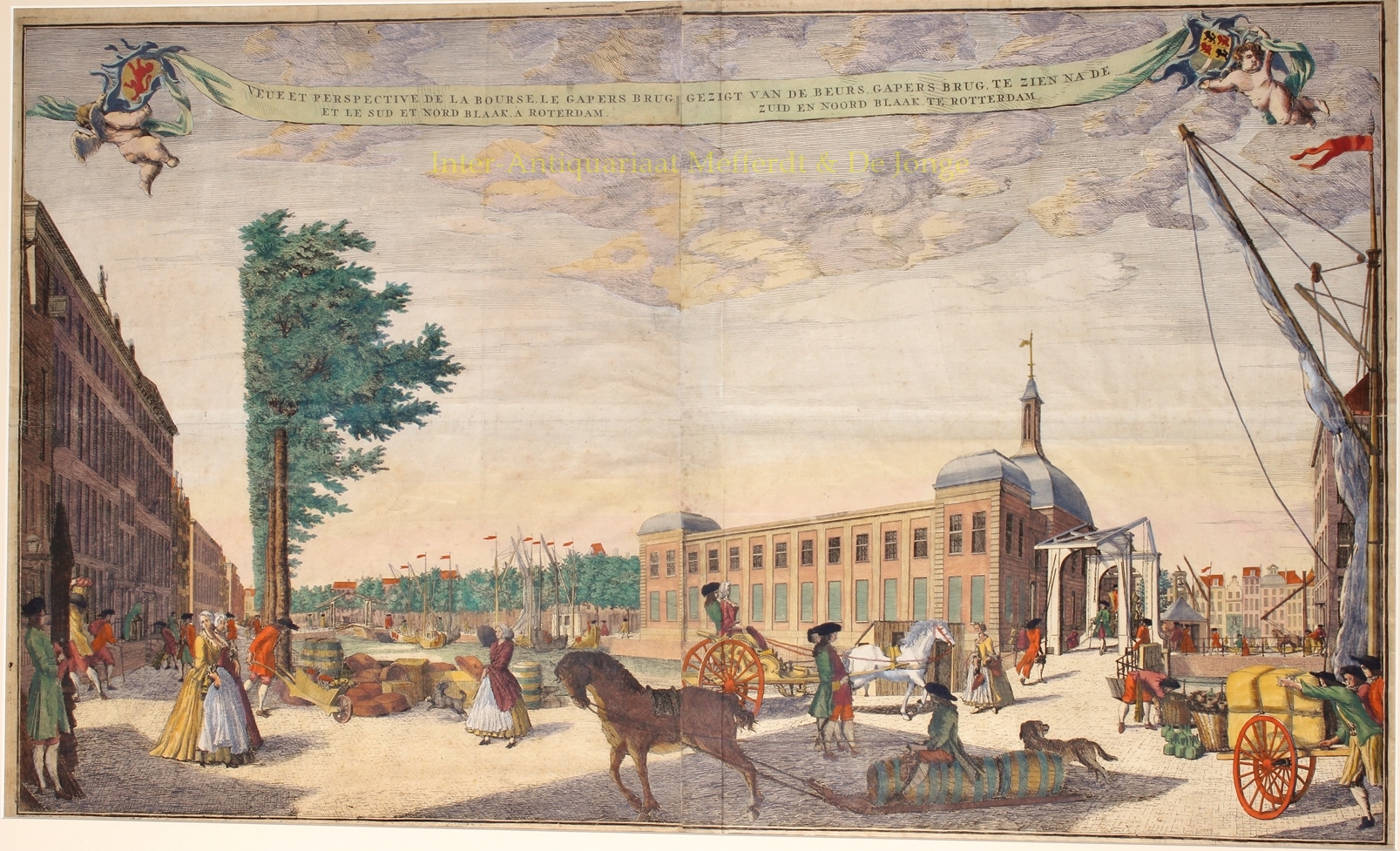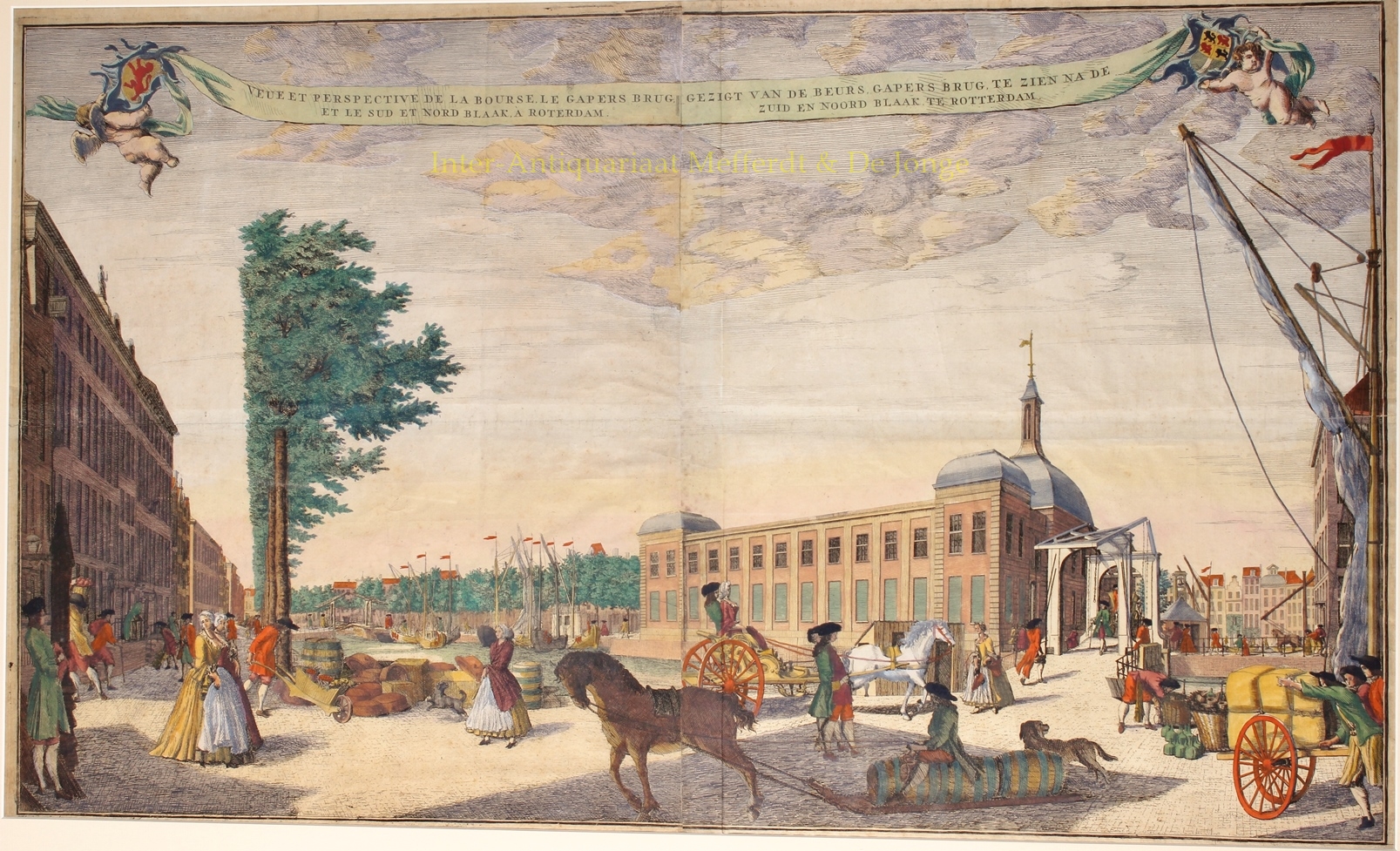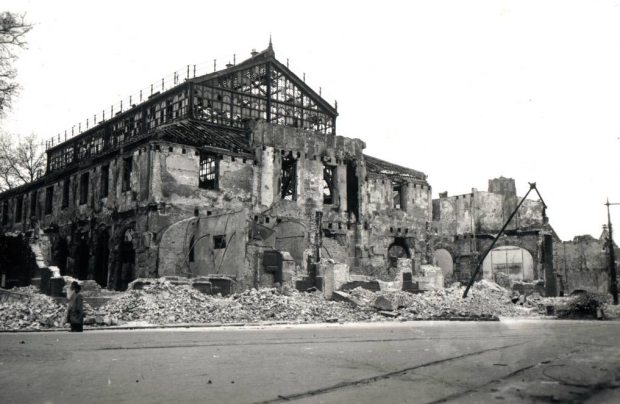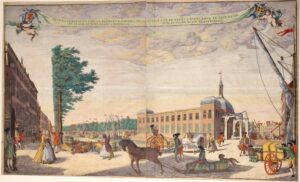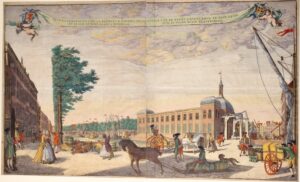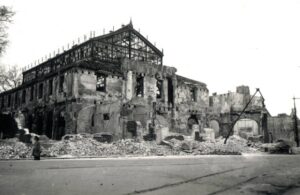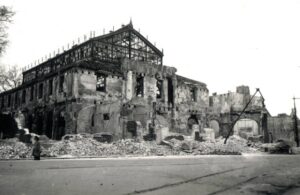LARGEST ENGRAVING OF THE OLD ROTTERDAM EXCHANGE
“Gezigt van de Beurs, Gapers Brug, te zien na de Zuid en Noord Blaak te Rotterdam.” [View of the exhange, Gapersbridge, te be seen with the Zuidblaak and Noordblaak in Rotterdam]. Rare (!) engraving printed from 2 plates made by Jacob Lindenberg around 1736-1740. With original hand colouring. Size: 58 x 97 cm.
We see the Blaak (canal) with the Zuidblaak, the Beurs [exchange] and the Gapersbrug. The streets are busy, people come and go. Someone is loading bottles into carrying baskets. A cart with a bale of fabric is rolled into the scene on the right. A sled with two barrels is pulled by a horse, the owner allows himself to be carried along while sitting on one of the barrels and smokes a pipe with it. An elegant couple rides by in an open carriage. Someone is pushing a wheelbarrow with vegetables, it looks heavy. People are flirting on the corner of the street.
More than ten years before the exhange of Hendrick de Keyser was built n Amsterdam – in 1598 to be precise – Rotterdam already had an exchange on the Haringvliet. There was mainly trade in goods. Lack of space meant that trade moved to the Noordblaak in 1635. From 1736, the trade took place in a new building building designed by architect Adriaen van der Werff on Westnieuwland, on the north bank of the Blaak. The square in front of the eastern entrance became the Beursplein. It was said that the Rotterdam exchange was the most beautiful in Holland, perhaps even the most beautiful in all of Europe.
In 1867 the building was given a glass roof after the example of London’s Crystal Palace. In 1877, the Rotterdam Beurs train station was opened across the Beursplein as part of the Luchtspoor Breda-Rotterdam railway line. 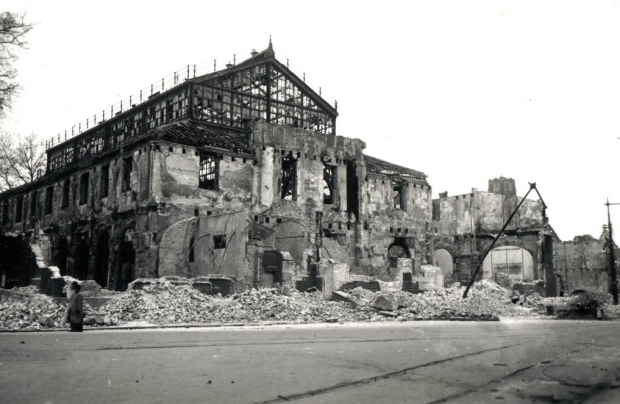 The building was destroyed on 14 May 1940 during the bombing of Rotterdam.
The building was destroyed on 14 May 1940 during the bombing of Rotterdam.
Price: Euro 1.950,-


